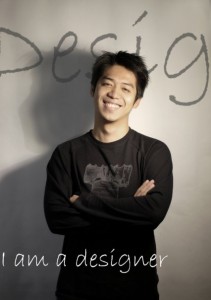PhD Researcher on Generation Y Interaction
Supervisors: Prof.Dr. Pieter Jan Stappers, Dr.Ir. Gert Pasman
My PhD project focuses on developing new user interface for the so-called Generation Y office workers. Born in the 1980s and early 1990s, they are digital natives, which have experienced digital technology their entire lives. Thus they have developed new ways and habits of interacting with their digital world, putting very high demands on the applications, services, devices and networks that enable and support these interactions. To cater to this new generation of workers, future business applications and services should fit in with richer ways of interaction that go beyond keyboard, mouse, and display. The project goal is to explore and develop these new Generation Y interfaces, and to study how these interfaces will affect future ways of working.
This PhD project is a collaboration between the Design Techniques (DT) group and Exact. The DT group, which is associated with the ID-StudioLab, focuses on developing methods, tools, and techniques to support designers and design teams in the early phase of the design process. Exact (exact.com) is an internationally renowned developer of business software for small, midsize, and large organizations.
Goals and Relevance
To cater to this new generation of office workers, future business tools, applications and services should fit in with richer ways of interactions that go beyond keyboard, mouse, and display. The goal of this research is therefore to explore Generation Y interactions within the context of office work, to develop new tools that support these interactions and to study how they could affect future ways of working.
The research questions in this research are:
- What are the Generation Y interaction styles in home life and office work?
- What are the interaction qualities to specify Generation Y interaction style?
- What are the differences of the interaction qualities experienced between the home and work contexts?
- What are the opportunities to design an office tool or service that elicits specific qualities?
- What is the role of this new interaction in future office work?
These research questions can be grouped into two divisions. The first division consists the first three questions, serving to gain knowledge on how Generation Y office workers experience user-product interactions in the home and work contexts. The second division consists the last two questions, serving on how to use this knowledge learned to design Generation Y interaction styles of working.
The scientific relevance of this research lies in bringing Generation Y, Technology, and Work Context together with the purpose of finding out Generation Y interaction styles and how to support future office work in new ways of interacting. By looking at interactions experienced in the home and work contexts, new knowledge is gained on Generation Y interaction qualities and design opportunities. By designing tools that integrate this knowledge, Generation Y ways of interacting with novel office tools are demonstrated. Making information technology (IT) capable of supporting creative and inspirational interaction styles, opposed to pushing buttons and staring at screens.
By bringing new knowledge, insights, inspiration and examples, we wish this research provide a positive impact on the way that Generation Y interaction research goes. Regarding our peers, designers and researchers who focus on understanding the work context and designing new interaction styles would benefit from the result of this research. More specifically, our peers include designers and researchers who work on the CSCW (computer supported cooperative work), CHI (computer human interaction), DIS (designing interactive system), UBICOMP (ubiquitous computing), IUI (intelligent user interface), UIST (user interface software and technology), TEI (tangible and embedded interaction), PUC (personal and ubiquitous computing) and HRI (human robot interaction) fields.




